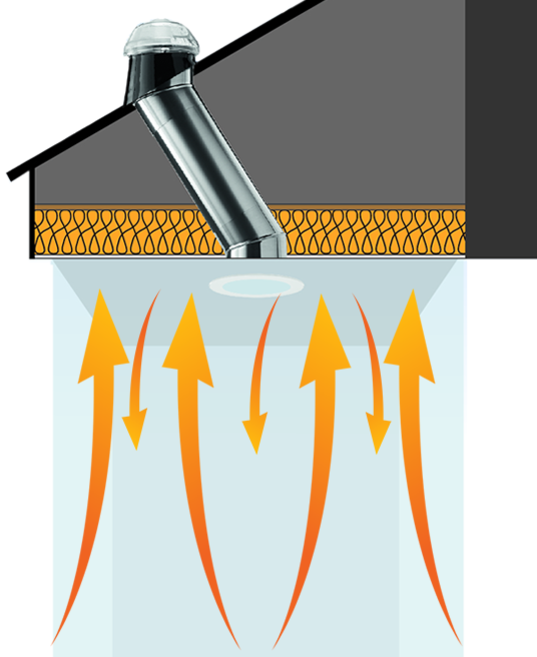Blogs, News & Events...
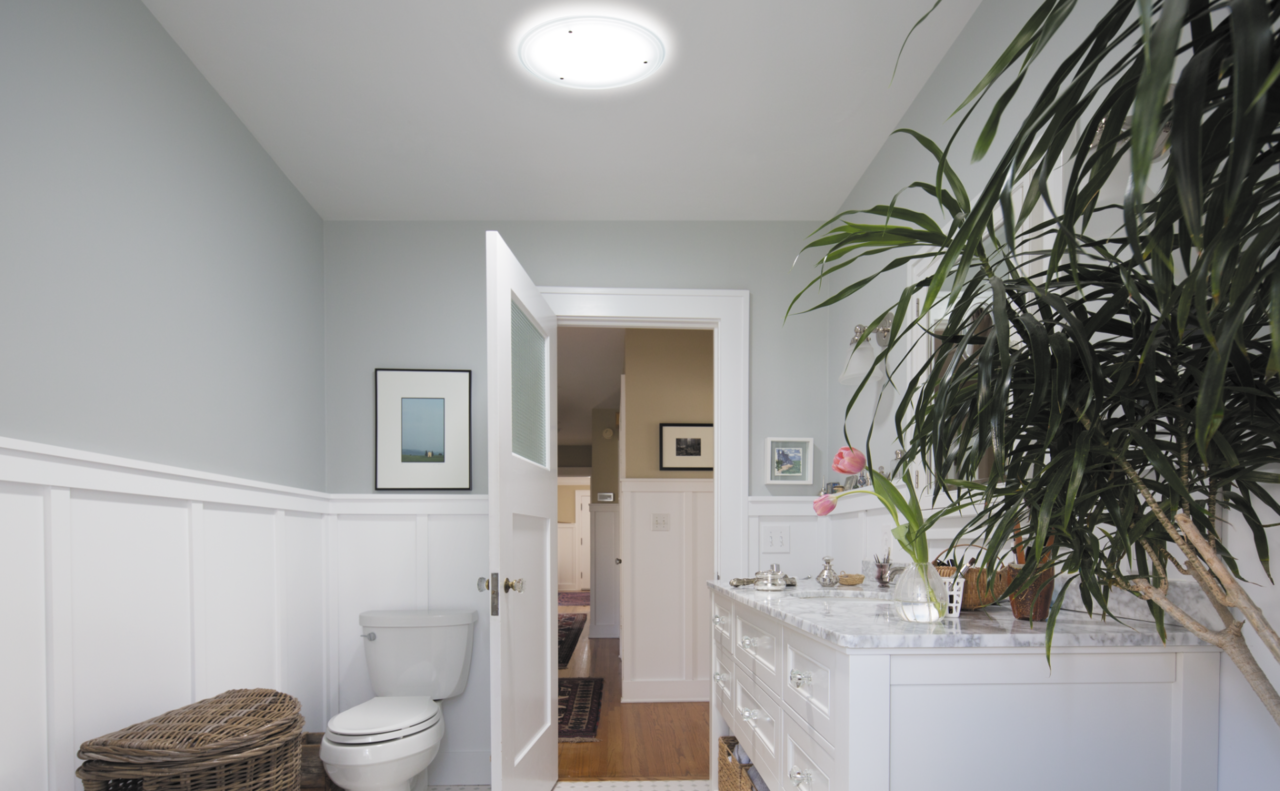
7 Things You Should Know Before Purchasing a Daylighting System
Now known generically across the market as sun tunnels or sun pipes, believe it or not, tubular daylighting systems are not all the same. The tubular daylighting market is growing day by day, so we here at Solatube UK have taken the initiative to write a piece on what we believe are the 7 most important things you should know or look out for when purchasing a daylighting system:
1. How Does It Work?
The concept is simple; a tubular daylighting system takes daylight from the rooftop of a building and pipes it through highly reflective tubing to a point in the ceiling below where a diffuser spreads the daylight into the room below. The original concept was patented by Solatube in Australia over 25 years ago.
2. Flexible vs Rigid - What's the difference?
To put it simply, daylighting systems with flexible tubes simply do not perform well: Flexible tube by its very nature is not a reliable means of transferring light; light entering a flexible tube will not necessarily continue to bounce on a downward path, but will scatter randomly in all directions (including upwards) as it bounces off the concertinaed surface of the tube. In-fact, independent test results have shown that Spectralight Infinity tube material will deliver 10 times more daylight than a flexible system!
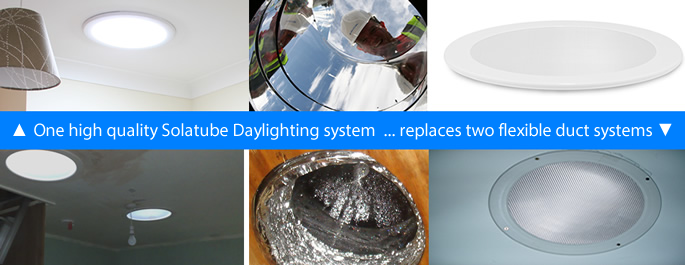
3. Reflectivity - Why does it matter?
A 99.7% reflective material means that only 0.3% of energy (light) is lost each time light bounces against the tube material — with 99.7% of the remaining light continuing on. So if the light bounces down the tube 20 times to get from one end to the other, a huge 94.17% of the original light is transferred with Spectralight Infinity tube material - which is exclusive to Solatube.
A seemingly small difference in a tube's reflectivity can result in a significant loss of light delivered into the room below. For example, a 98% reflective material would result in only 66.76% of the light being transferred after 20 bounces.
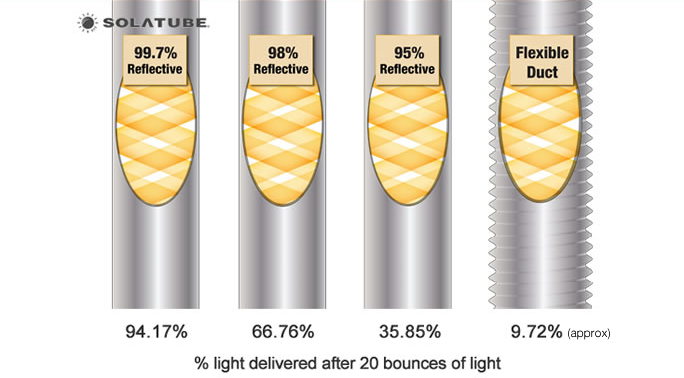
4. Roof Domes and Flush Glazed Panels – Is One More Effective Than The Other?
Domes are designed to actively gather daylight at roof level whereas flat panels or tiles are ‘passive’ daylight collectors. Flat panels or tiles therefore work best on south-facing aspects when the daylight can enter the tube aperture directly.
On north, east or west aspects and when the sun is low in the sky in the early morning or evening time, roof domes really have the advantage; roof domes usually contain technologies such as Fresnel lenses or reflectors to ‘harvest’ daylight – so more daylight enters the tube at roof level throughout the whole day/year - even when the sun is low in the sky.

5. Aesthetics - Will It Look Pleasing In My Home?
The purpose of a tubular daylighting system is to bring beautiful into your home and eliminate those dark or gloomy rooms. So why not do it with flair with one of our attractive and stylish ceiling fittings - after all, this will be the most visible element of the daylighting system in your home.
We offer the largest range of decorative fixtures for your daylighting system; all are interchangeable and can be combined with our wide range of optional accessoriess too.
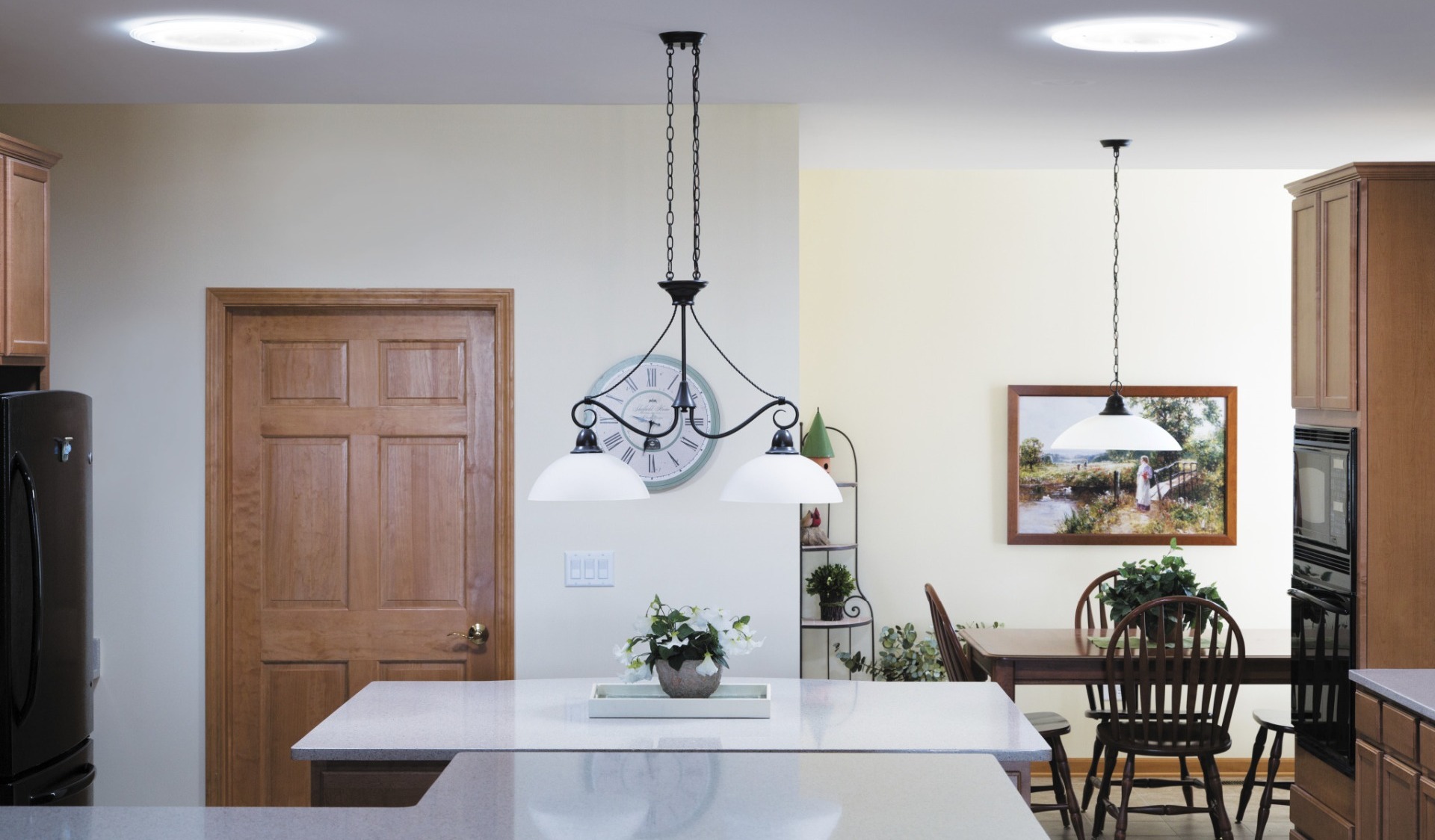
6. Quality - How Do You Know You're Purchasing A Quality Product?
If you're thinking of purchasing a tubular daylighting system, particularly if you are buying online, you should look for some recognition or accreditation for the product to ensure you are making the best choice.
For example, does the system have a UK accreditation, such as a BBA certificate, to confirm its required regulatory compliance and fitness for purpose? Does it have a manufacturer's backed warranty? Does the manufacturer have a long history in the daylighting industry - and do they continue to innovate? Look for recognition by building and construction professionals.
Be aware that some imported products do not meet UK regulatory requirements owing to their use of unclassified roof dome materials - specifically those with acrylic domes.



7. Efficiency - Is It Thermally Efficient?
A quality tubular daylighting system can offer excellent thermal efficiency – often better than traditional, double-glazed windows. Look for a system with a double-glazed ceiling diffuser to prevent your precious heated (or cooled) air escaping up the tube into the roof void. Flashing insulators or insulated flashings are a significant help too in maintaining thermal efficiency. We offer an enhancement kit for our tubular daylighting systems that gives u-values as low as 0.5 W/m²K.
